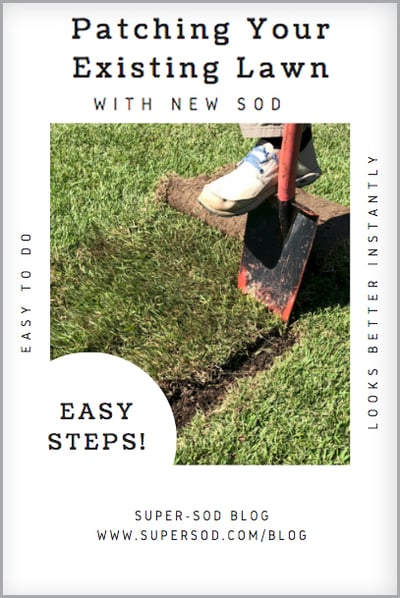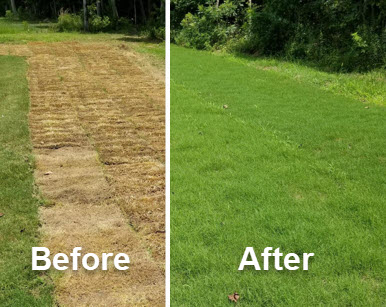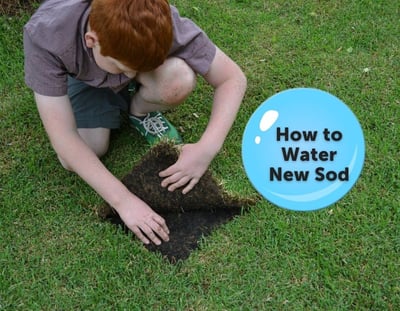
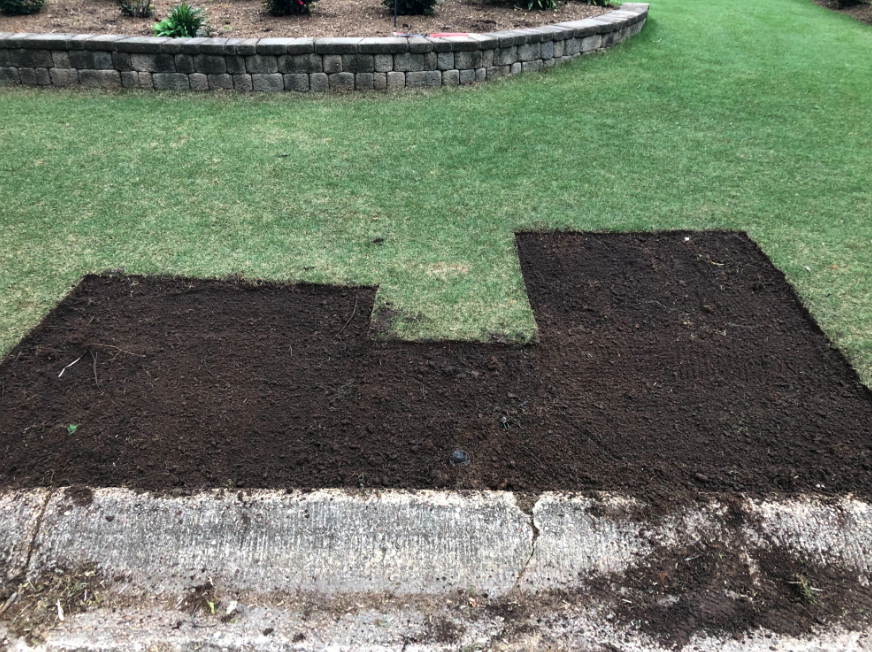
Bill Gates, Steve Jobs and Jeff Bezos have turned me into the impatient, “Gotta Have it Now” person that I am today. Bill developed software that drove the proliferation of PCs, Steve created a small personal device to access information anywhere, and Jeff figured out how to deliver just about anything you want within a day or two using the technologies that Bill and Steve developed! Thanks to these guys, anything less than “RIGHT NOW!” is unacceptable in my world.
Sod: The Original form of Instant Gratification
So for you impatient, “Gotta Have it Now” lawn enthusiasts out there, sod is the answer to unsightly areas in your lawn. In most cases, you can use sod to renovate unsightly areas of your lawn in just an hour or so!
Here are some helpful tips on how to make this happen.

The "before" photo shows several damaged spots in the lawn. Next you see the squares that have been cut out, soil loosened and Soil³ added. The last photo illustrates the instant gratification of patching with sod - after a few weeks the new patches are barely noticeable.
Before you get started, gather these items:
- Flathead (square) shovel or edging shovel
- Garden rake or hoe
- Soil³ organic compost – 1 small bag per 20 square feet of sod
- Rolls of new sod
- Garden hose
You can purchase individual rolls of sod at our Super-Sod stores to complete your repairs. Get pricing by calling 888-360-1125 or by requesting a quote online.
If you need help making sure that your new patches match the rest of your lawn, your local Super-Sod store will be glad to help. The best way to determine which type of grass you have is to dig up a small square (2-4 inches) and bring it to the store. (Make sure your sample is fresh - if it is old and dried up it will be hard to identify.) Let our experts take a look and you can compare it to the sample grass plots.
Follow These Steps:
- Cut a square outline: Use a flathead or edging shovel to cut straight down through your existing grass and create the border of where you’ll be removing the damaged grass.
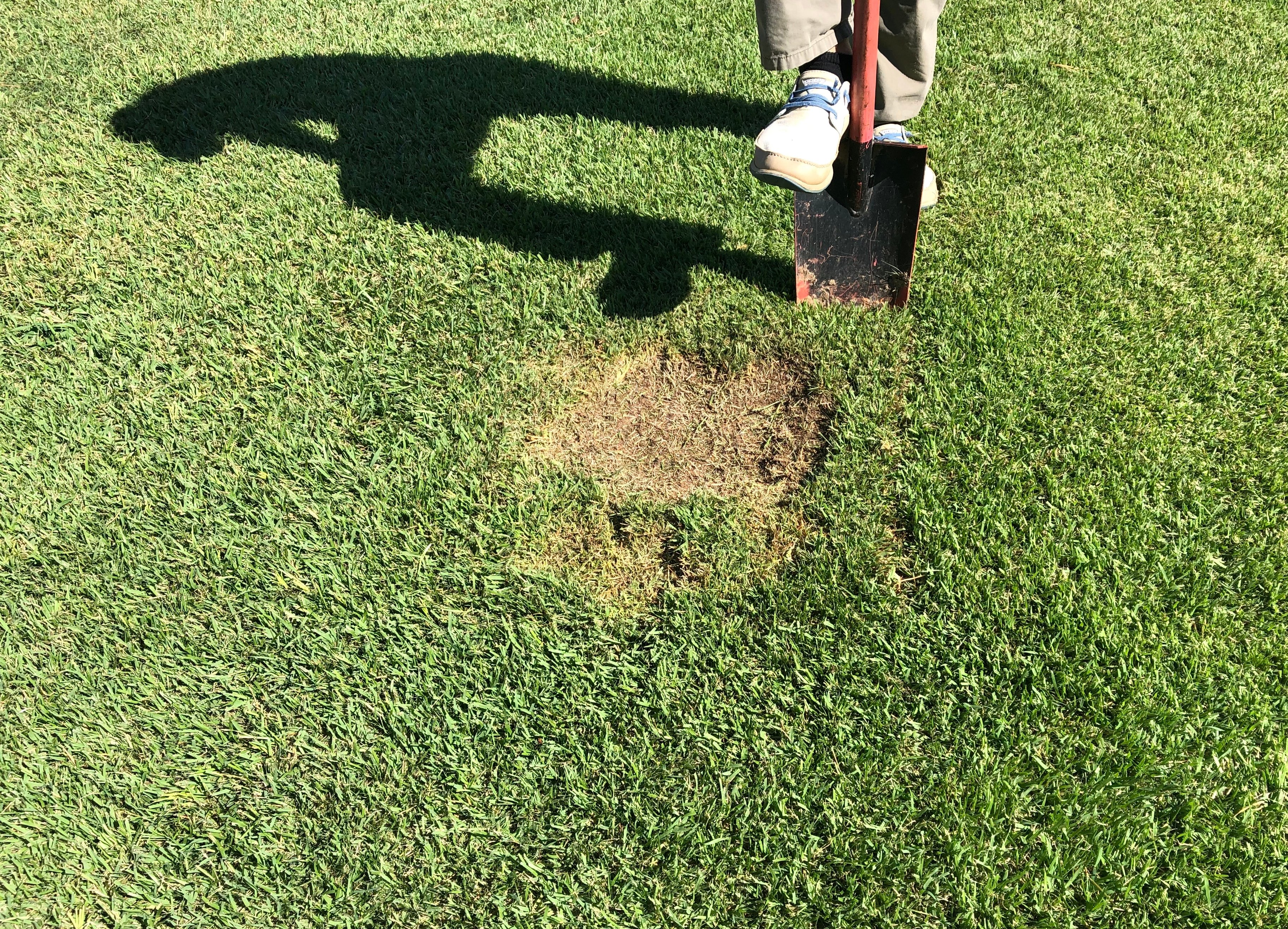
- Remove existing vegetation: Lower the shovel to an angle and slide it underneath the grass or other vegetation that you are removing. Remove as much as possible, whether dead or alive.
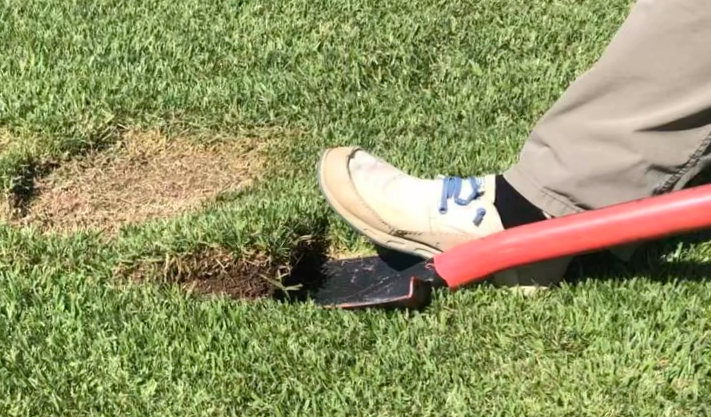
- Break up the dirt: Once the vegetation is removed, take a landscape rake or hoe and loosen the top 2 or 3 inches of soil. You don’t want compacted dirt beneath your new sod. You will probably need to remove some of the loosened dirt (see next step). Rake the broken up dirt to make it flat and very lightly tamp it down.
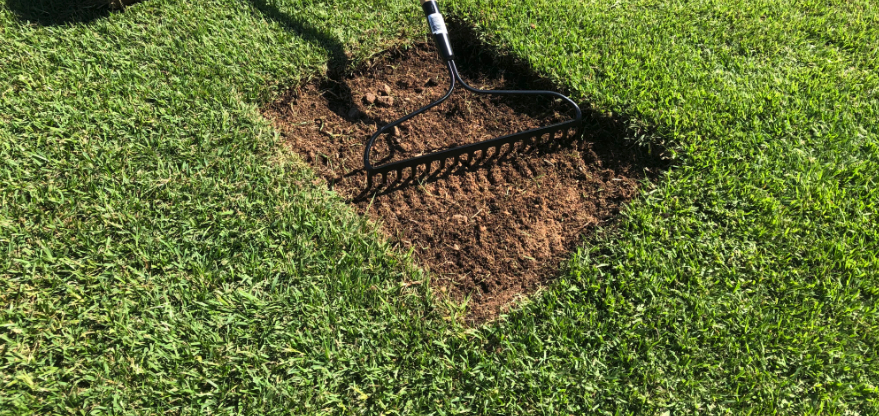
- Improve the area with Soil³ and check your levels: Add enough Soil³ organic compost to leave about a ½” between the top of your existing soil and the Soil³ you just added, then rake it smooth. You need to allow for the depth of your new sod to make sure that it will be even with the rest of your lawn.
Soil³ provides natural nutrients to encourage root growth of your new sod and also helps retain moisture. Our Soil³ Mini Cubes are the perfect size for your lawn patching job.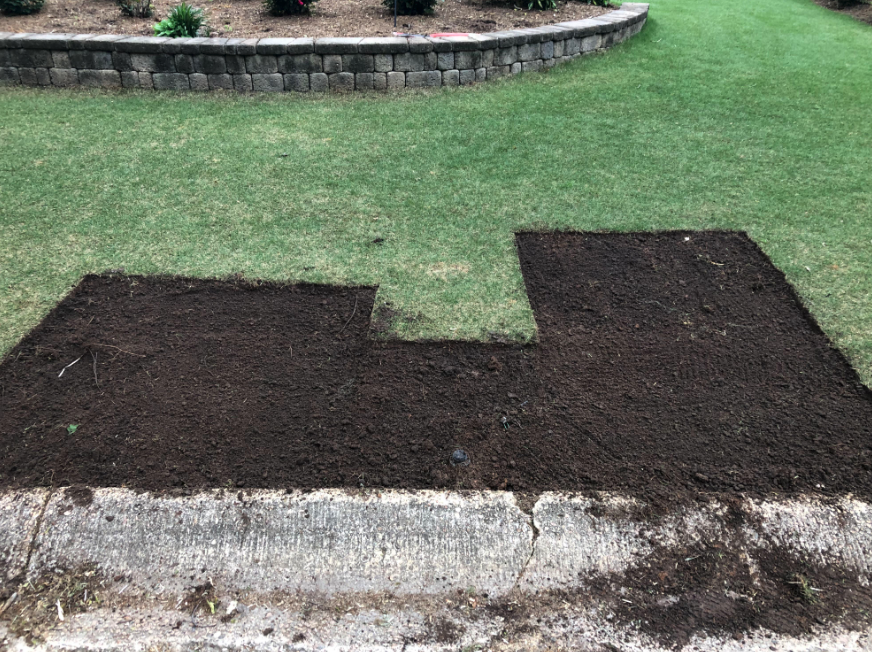
- Cut new sod to fit: Roll out the sod you purchased from your local Super-Sod and cut to fit the area using a machete or the same edging shovel you used to create the border. Make sure the seams are tight - avoid any gaps along the edges that will cause the sod to dry out.
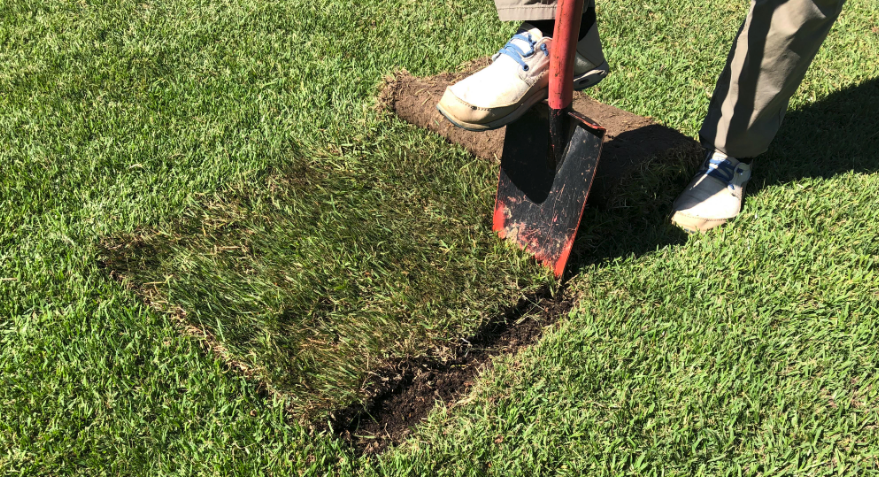
- Water, water, water: Immediately after you have laid it, grab your garden hose and water the new sod in well. Water every morning for about 2 weeks and keep moist until the sod has rooted. Keep in mind that the smaller the piece you patch, the faster it will dry out.
Pro Tip: Lay your new roll of sod over the top of the area to be patched. Use your shovel to cut down through the new sod and the existing grass below at the same time. This will give you a patch that exactly matches the size and shape of the hole below.
How to care for your new sod patches:
- Mowing: You can resume mowing immediately with a lightweight push mower or a robotic mower, but you’ll want to wait until your grass is rooted before mowing with a heavy, riding lawn mower. Don't wait too long - once it is rooted and it is growing, start mowing!
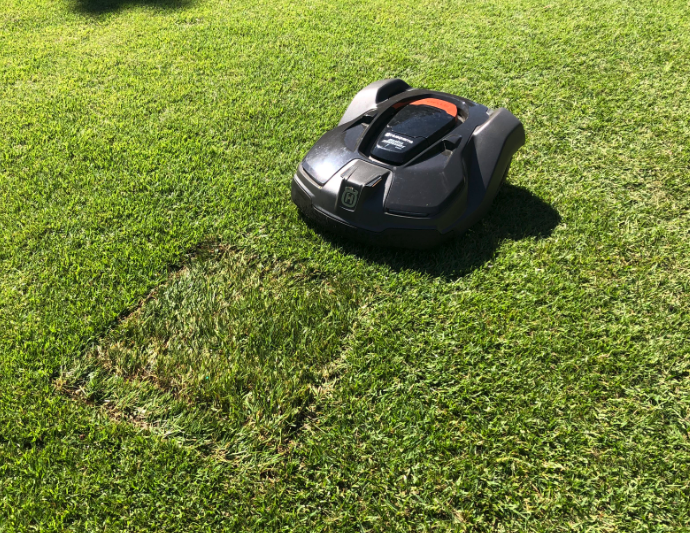
- Weed control: The best solution is to hand pull weeds. You can spot treat with a post-emergent herbicide only after you’ve mowed your new grass patches at least 3-4 times and your seams have disappeared. But be aware that post-emergent treatment can cause discoloration of your newly patched grass!
- Pre-emergent: Wait a full growing season after install before applying pre-emergent herbicide to these areas of your lawn. Pre-emergent can adversely affect the roots of sod that isn’t established.
- Fertilizing: If you added a layer of Soil³ beneath your sod patches, it will provide natural nutrients to help the roots get established. You should follow the fertilizer schedule that coincides with your grass type and can be found in our lawn maintenance guides.
Patching a Larger Area
Sometimes you have a bigger area that needs to be improved - maybe as a result of heavy traffic, disease or poor drainage. Make sure that you have resolved any underlying problems that caused the damage before you install new sod. The process for a large area is much the same as the steps above. Watch this video for some tips:
Call Super-Sod!
So the next time you want to get your lawn looking its best, call your local Super-Sod to order the material you need to make it happen. They’ll sell you anywhere from 1 roll (10 square feet) to a full truckload!
By the way… I think those three guys above copied our recipe to success since we’ve been offering a solution to impatient people for over 50 years!
